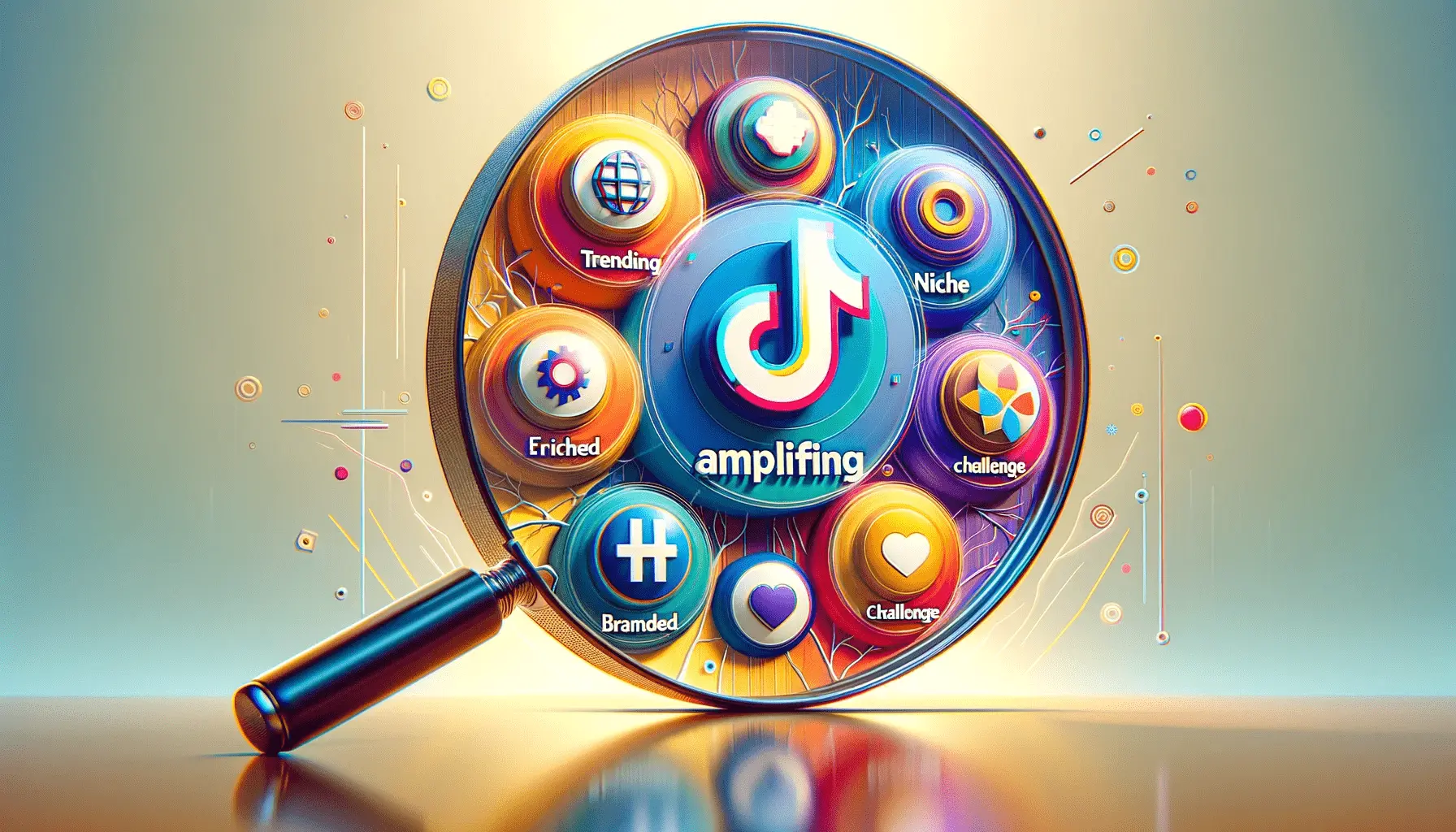In the ever-changing landscape of online marketing, reaching your desired audience is the key.
Yet, there exists a thin line between grabbing attention and overwhelming potential buyers.
This equilibrium relies on a strategy called ad frequency optimization.
Understanding and regulating how often your audience sees your advertisement can make all the difference to your campaign’s success, particularly on LinkedIn.
- Understanding Ad Frequency in LinkedIn Advertising
- Identifying the Optimal Ad Frequency for Your Campaigns
- Implementing Successful Frequency Capping Techniques
- Applying A/B Testing to Optimize Ad Frequency
- Tracking and Adjusting Ad Frequency for Maximizing Performance
- Mastering Ad Frequency Optimization for LinkedIn Success
- Frequently Asked Questions about Ad Frequency Optimization
Understanding Ad Frequency in LinkedIn Advertising
Ad frequency optimization refers to the number of times a unique user views your ad within a specific time period.
On LinkedIn, this metric is calculated by dividing the total number of ad impressionsThe total number of times an ad is displayed, regardless of whether it is clicked. by the total reachThe number of unique users who have seen an ad at least once..
For example, if your campaign has 5,000 impressions over 4,000 unique users in one week, your ad frequency will be 1.25, meaning most users will have viewed your ad once or twice during this period.
Definition and Importance of Ad Frequency
Ad frequency optimization is a critical metric in digital marketing.
It helps advertisers gauge how often their target audience is exposed to their ads.
Maintaining an appropriate frequency ensures that the message is conveyed effectively without causing ad fatigueA condition where users become bored or annoyed due to seeing the same ad too frequently, leading to decreased engagement., where users become annoyed or bored due to excessive exposure.
Finding the right balance is essential to maximize engagement and boost return on investment.
Impact on Audience Engagement and Brand Recall
Your ad frequency directly affects audience engagement and brand recall.
An optimized frequency can build brand awareness and keep your products top-of-mind for your target audience.
However, excessive ad frequency can lead to diminishing returns, as users may start ignoring your ads or even developing negative sentiments toward your brand.
- Too high of an ad frequency can result in ad fatigue and disengagement.
- Too low of an ad frequency may lead to poor exposure and low brand recall.
- A well-balanced ad frequency ensures your message is impactful without being intrusive.
Therefore, monitoring and optimizing ad frequency is essential for keeping your audience engaged and achieving your marketing objectives on LinkedIn.
Monitoring ad frequency helps maintain engagement and prevents ad fatigue, ensuring your LinkedIn campaigns perform optimally.
Identifying the Optimal Ad Frequency for Your Campaigns
Discovering the right ad frequency optimization strategy is crucial for optimizing the success of your LinkedIn advertising campaigns.
Achieving the right balance ensures your audience is exposed to your message sufficiently without experiencing ad fatigue.
Let’s examine the key determinants of optimal ad frequency and how to balance reach and frequency to avoid diminishing returns.
Determinants of Ideal Ad Frequency
Several variables influence the ad frequency optimization of your campaigns:
- Campaign Objectives: Brand awareness campaigns might perform better with higher frequencies to reinforce messaging, while direct response campaigns should employ lower frequencies to avoid overwhelming the audience.
- Target Audience Size: Smaller but more targeted audiences will reach optimal ad frequency levels faster than larger audiences, necessitating close monitoring to prevent overexposure.
- Ad Content and Format: Engaging and varied ad creatives can sustain audience interest at higher frequencies, whereas repetitive or unappealing content can lead to quicker ad fatigue.
- Industry Standards: Different industries have varying tolerances for ad frequency. Understanding these norms can help guide your frequency strategies.
Avoiding Ad Fatigue by Optimizing Reach and Frequency
To prevent ad fatigue while maintaining audience engagement, consider the following strategies:
- Use Frequency Limits: Set limits on the number of times an individual sees your advertisement within a specific time frame to prevent overexposure. LinkedIn recommends setting a limit of 3-4 impressions per day for Sponsored Content and Text Ads, and a limit of 20 impressions per week for Message Ads.
- Monitor Performance Metrics: Regularly analyze key performance indicators such as click-through rates (CTR) and conversion rates. A decline in these metrics may indicate that your audience is experiencing ad fatigue, signaling the need to adjust your ad frequency optimization strategy.
- Refresh Ad Creatives: Periodically updating your ad visuals and copy can keep your content fresh and engaging, reducing the effects of ad fatigue even at higher frequencies.
- Apply A/B Testing: Experiment with different ad frequency levels and monitor the results to determine the optimal frequency that maximizes engagement without causing fatigue.
By carefully considering these factors and strategies, you can determine and maintain the optimal ad frequency for your LinkedIn campaigns, ensuring effective audience engagement and improved campaign performance.
Balancing ad reach and frequency is essential. Testing and analyzing campaign data allows you to find the sweet spot for optimal exposure.
Implementing Successful Frequency Capping Techniques
Controlling how often your audience sees your ads is highly crucial in digital marketing.
This is where ad frequency optimization plays a key role.
Frequency capping is an effective strategy to prevent ad fatigue and ensure your audience remains engaged.
By placing controls on ad visibility, you can enhance the user experience and improve overall campaign performance.
Implementing Suitable Daily and Weekly Frequency Caps
With the right frequency cappingA strategy that limits the number of times a user sees an ad within a specific period to prevent overexposure. strategies, your audience will not be overexposed to your ads.
Here are some essential guidelines:
- Sponsored Content and Text Ads: Set a daily frequency limit of 3-4 impressions per user. This balance ensures your ads remain visible without becoming irritating.
- Message Ads: Apply a weekly frequency cap of 20 impressions per user to prevent overexposure and disengagement.
- Adjust Based on Performance: Decrease these limits according to your campaign objectives and audience behavior to ensure optimal engagement.
Utilizing LinkedIn’s Frequency Capping Features
LinkedIn offers powerful tools to effectively manage ad frequency optimization and control exposure levels:
- Custom Frequency Caps: Within LinkedIn’s campaign settings, you can define how many times a user sees your ad within a specific time frame, adjusting exposure to fit your strategy.
- Monitoring Tools: Use LinkedIn’s analytics to track key performance metrics such as impressions and reach, allowing you to modify frequency caps accordingly.
Utilizing these tools ensures a positive user experience and enhances the effectiveness of your ad frequency optimization strategy, leading to better campaign performance.
Ignoring frequency capping can lead to ad fatigue, negatively impacting user engagement and overall campaign performance.
Applying A/B Testing to Optimize Ad Frequency
Ad frequency optimization in digital marketing is crucial to engage your audience with your content without causing ad fatigue.
One of the most effective ways to achieve this balance is through A/B testingA method of comparing two versions of an ad or campaign to determine which performs better..
This approach allows you to experiment with different ad frequencies and determine the most effective strategy for your LinkedIn campaigns.
Building A/B Tests for Frequency Changes
To perform ad frequency optimization using A/B testing, follow these steps:
- Define Clear Objectives: Identify the goal of the test, such as increasing click-through rates (CTR) or conversions.
- Select Frequency Variations: Choose different frequency caps to test. For example, one group may be exposed to 3 impressions per week, while another sees 5 impressions per week.
- Randomize Audience Segments: Divide your test audience randomly into different groups to ensure unbiased results.
- Use the Same Variables Across the Board: Keep all other elements, such as ad creative and targeting parameters, consistent across test groups to isolate the impact of frequency changes.
- Test Concurrently: Conduct the tests during the same time period to account for external factors that may influence user behavior.
Drawing Conclusions from Test Results to Make Decisions on Frequency Strategies
After running the A/B tests, analyze the results to identify the optimal ad frequency:
- Compare Performance Metrics: Assess key metrics such as CTR, conversions, and engagement rates across different frequency groups.
- Identify Patterns: Look for trends that indicate improved performance at specific frequency levels.
- Assess Statistical Significance: Ensure that the differences observed are statistically significant and not due to random fluctuations.
- Apply Findings: Use the test results to refine your ad frequency optimization strategy, adjusting frequency caps to enhance campaign performance.
By systematically applying A/B testing, you can fine-tune your ad frequency optimization methods, leading to more effective LinkedIn advertising campaigns that engage your audience without overwhelming them.
A/B testing different frequency levels helps refine your LinkedIn ad strategy, leading to better audience engagement and campaign efficiency.
Tracking and Adjusting Ad Frequency for Maximizing Performance
Optimizing ad frequency is a continuous process that requires regular monitoring and adjustments to maintain campaign success without inducing ad fatigue.
By keeping track of key performance indicators and making data-driven decisions, you can sustain audience engagement and improve overall campaign performance.
Monitoring Campaign Performance Metrics on a Regular Basis
Constant monitoring of your campaign performance is essential for effective ad frequency optimization.
Pay close attention to the following metrics:
- Impressions: The total number of times your ads have been displayed.
- Reach: The number of unique users who have seen your ads.
- Frequency: The average number of times a user has seen your ads.
- Click-Through Rate (CTR): The percentage of users who clicked on your ads after viewing them.
- Conversion Rate: The percentage of users who completed a desired action, such as filling out a form or making a purchase, after clicking on your ads.
Regularly analyzing these metrics helps identify trends and potential issues in your campaign’s performance, allowing for timely adjustments.
Making Data-Driven Adjustments to Frequency Caps
Based on your performance reports, implement the following adjustments in your ad frequency optimization strategy:
- Reduce Frequency Caps: If you observe a decrease in CTR or conversions, it might be a sign of ad fatigue. Lowering the frequency cap can prevent overexposure and help retain audience interest.
- Boost Frequency Caps: If your ads are not generating enough impressions or engaging users effectively, increasing the frequency cap can improve visibility and campaign performance.
- Refresh Ad Creatives: Updating your ad copy and visuals can re-engage your audience and combat ad fatigue, even if frequency caps remain unchanged.
Implementing these data-driven adjustments ensures your ad frequency optimization strategy remains effective and aligned with your campaign goals.
Making the Most of LinkedIn’s Analytics Tools for Ongoing Improvement
Leverage LinkedIn’s analytics tools to enhance your ad frequency optimization process:
- Campaign Manager: Use this feature to monitor real-time performance metrics such as impressions, reach, and frequency, enabling you to make instant campaign adjustments.
- Demographic Reporting: Utilize audience data to analyze which segments are most engaged with your ads, allowing for more targeted frequency adjustments.
- A/B Testing Features: Experiment with different frequency caps and ad creatives to determine the optimal combinations for your target audience.
By using these tools effectively, you can continuously fine-tune your ad frequency optimization strategy, ensuring sustained audience engagement and long-term campaign success.
Regularly tracking key metrics such as impressions, reach, and CTR enables you to make data-driven adjustments for long-term campaign success.
Mastering Ad Frequency Optimization for LinkedIn Success
Optimizing ad frequency is key to running successful LinkedIn ad campaigns.
Achieving the right balance between reach and repetition keeps your audience engaged without causing ad fatigue.
By making strategic adjustments and leveraging LinkedIn’s tools, advertisers can build effective campaigns that drive conversions while maintaining a positive user experience.
Key Takeaways for Optimizing Ad Frequency
In this article, we have explored various ways to optimize ad frequency for LinkedIn ads.
Here are the key takeaways:
- Understanding Ad Frequency: Knowing how often your audience sees your ad helps prevent overexposure while maintaining brand recall.
- Determining the Optimal Frequency: Factors such as campaign objectives, audience size, and industry standards influence the ideal frequency for your ads.
- Implementing Frequency Capping: Setting the right daily and weekly frequency caps ensures controlled exposure, preventing ad fatigue and boosting engagement.
- Applying A/B Testing: Testing different frequency levels helps optimize strategies and determine the most effective exposure rates.
- Monitoring and Adjusting: Regularly reviewing performance metrics and making data-driven decisions ensures continuous optimization of ad efficiency.
Best Practices for Long-Term Ad Frequency Optimization
To maintain audience interest and maximize campaign performance, advertisers should follow these best practices:
- Track Performance Metrics: Monitor impressions, reach, CTR, and conversions to understand how frequency impacts campaign performance.
- Adjust to Audience Behavior: Modify ad frequency based on how users interact with your content, refining changes as engagement rates fluctuate.
- Refresh Ad Creatives: Prevent ad fatigue by periodically updating visuals, messaging, and calls to action to keep content fresh and engaging.
- Leverage LinkedIn’s Analytics Tools: Use Campaign Manager and Demographic Reporting to refine targeting and optimize exposure levels.
- Experiment and Iterate: Conduct A/B testing with different frequency strategies and refine based on performance data to enhance long-term ad effectiveness.
Final Thoughts on Ad Frequency Optimization
Mastering ad frequency optimization requires a combination of strategic planning, analytical insights, and adaptability.
By closely monitoring performance, setting appropriate frequency caps, and continuously testing new approaches, advertisers can develop high-impact campaigns that reach the right audience at the right time without overwhelming them.
With the right strategy, LinkedIn ad frequency optimization can lead to stronger brand awareness, increased engagement rates, and ultimately, a higher return on investment.
By implementing the techniques outlined in this article, you can ensure that your ads remain relevant, effective, and impactful.
Effective ad frequency optimization boosts brand awareness, increases engagement, and enhances return on investment.
Enjoyed the article? Let its author handle your social media ads. Visit our service page to get started!
Frequently Asked Questions about Ad Frequency Optimization
Ad frequency optimization is the cornerstone of effective LinkedIn advertising campaigns.
Below are frequently asked questions and concise answers to help you refine your strategy.
Ad frequency optimization involves managing how often your ads are shown to the same user to boost engagement and minimize ad fatigue.
Ad frequency ensures your audience sees your message enough to remember it but not so much that it becomes annoying, balancing brand recall and user experience.
Optimal ad frequency is based on campaign goals, audience size, and industry benchmarks.
It requires continuous testing and monitoring.
Frequency capping limits how many times a given user sees your ad during a specified timeframe to prevent overexposure and ad fatigue.
Excessive ad frequency can lead to ad fatigue, causing users to ignore or develop negative associations with your advertisements, reducing engagement.
Yes, too low ad frequency may result in insufficient exposure, failing to make a lasting impression on your audience.
Ad frequency measures how often ads are shown to the same users, while ad reach represents the total number of unique users who see your ads.
Platforms like LinkedIn offer frequency capping features and analytics tools to measure and optimize ad frequency effectively.
A/B testing with different ad frequencies helps determine the optimal exposure rate that maximizes engagement while preventing ad fatigue.
Signs of ad fatigue include declining click-through rates, reduced conversions, and negative user feedback.
Regularly, such as weekly or monthly, to ensure your ads remain effective and adjust to changing audience behavior.
Yes, optimal ad frequency can boost ROI by increasing engagement and conversions, while excessive frequency wastes budget and reduces ROI.
Proper ad frequency optimization ensures your ads appear frequently enough to enhance brand awareness without overwhelming users.
Yes, while strategies may vary, ad frequency optimization is essential across all advertising platforms to maintain campaign effectiveness.













